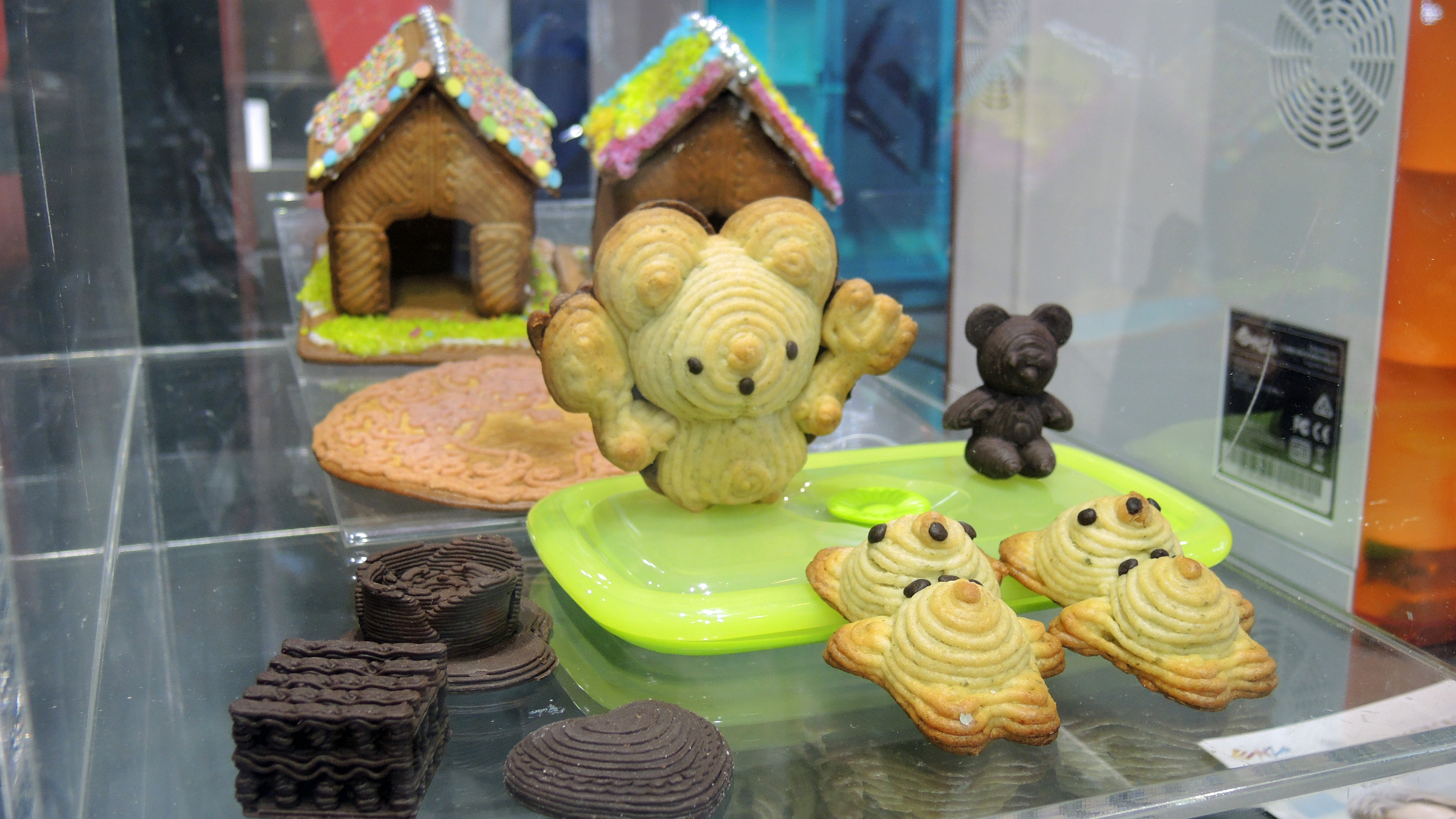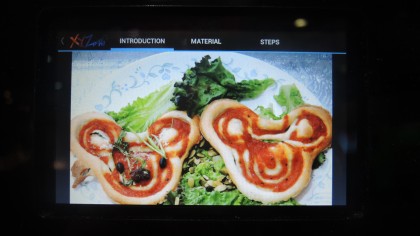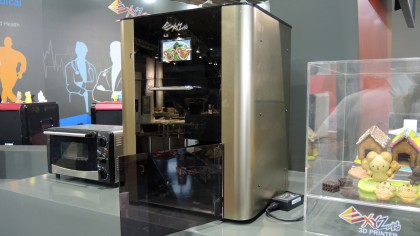Next year, this black box will 3D print you a pizza
And some biscuits

The 3D printing revolution is taking about as long to happen as the process of 3D printing itself. The evolution from firing ink onto paper to printing three dimensional shapes is a slow-burn development as technology gradually gets better and prices creep down, but it will eventually change the world: consumerism, architecture, medicine... 3D printing will shake up many industries. Should China, the world's biggest manufacturing country, be concerned? Maybe. Should Pizza Hut be scared? Absolutely.
You might have already heard about 3D printing food, but we've seen it. Hidden away in a dark corner of the IFA 2015 show floor is a small black box that is going to make waves. It's one of many 3D printers on display, but this one is different - it ejects things you can eat.
XYZ is showing off its new food printer to the public later this week (we snuck in a bit early and spotted it before the show opened). How does it work? Like 3D model printing, it's actually not very complicated: the printer is merely a conduit for the raw materials that you insert yourself. In this case you load the edible ammo into the machine and then program it do create your (uncooked) culinary masterpiece.

There are a limited number of possible materials you could use but endless options for customisation. On the front of the printer is an interactive display that shows you the raw materials you need for each creation. And just like 3D model printing, you'll be able to find and download recipes onto the machine. XYZ will issue a library of recipes but users will be able to submit their own for others to enjoy.
I dough not believe it
In its current form, this box can 3D print an entire biscuit along with decorations - a small batch will take about 10-15 minutes in the printer, with 10 minutes or so after to bake in the oven - while pizza requires two parts: the dough and the tomato topping, each of which comes in its own tube. Cake is more complicated: you'll need to bake the base first before submitting it to the 3D machine for decorating.
So why would anyone choose to make food this way? Convenience. 3D printing food probably won't save you money, but it will pay back its cost in saved time. Plus, with a few presses of a screen you can have a Mickey Mouse-shaped pizza followed by Hello Kitty-shaped cookies for dessert, all without getting your hands mucky.
It's this saving in labour costs that is why XYZ will initially target the business market. Having a machine take over the "designing" part of the food-making process will save time usually spent crafting pastry and other materials.
Sign up for breaking news, reviews, opinion, top tech deals, and more.

XYZ's Market Development Division Senior Manager, Gary Shu, explained that the barrier to market right now is less about the technology and more about the food material manufacturers. For 3D food printing to work, food material companies must agree to licence their ingredients, and that's why XYZ is targeting the Asian market first: it's already signed agreements with a number of players in China, Taiwan and Japan.
Then, says Shu, XYZ will look West. The goal is to get this printer in the US and Europe in early 2016, with a currently-ball-park price of $1800 (around £1180). XYZ believes it's the first company to mass produce and commercialise a 3D food printer to this level, but will it also entice the general public as well as food manufacturers? The proof will be, quite literally, in the pudding.
- Everything you may have missed from IFA 2015 so far
- You might also want to check out our rundown of the best ink tank printers right now

Hugh Langley is the ex-News Editor of TechRadar. He had written for many magazines and websites including Business Insider, The Telegraph, IGN, Gizmodo, Entrepreneur Magazine, WIRED (UK), TrustedReviews, Business Insider Australia, Business Insider India, Business Insider Singapore, Wareable, The Ambient and more.
Hugh is now a correspondent at Business Insider covering Google and Alphabet, and has the unfortunate distinction of accidentally linking the TechRadar homepage to a rival publication.